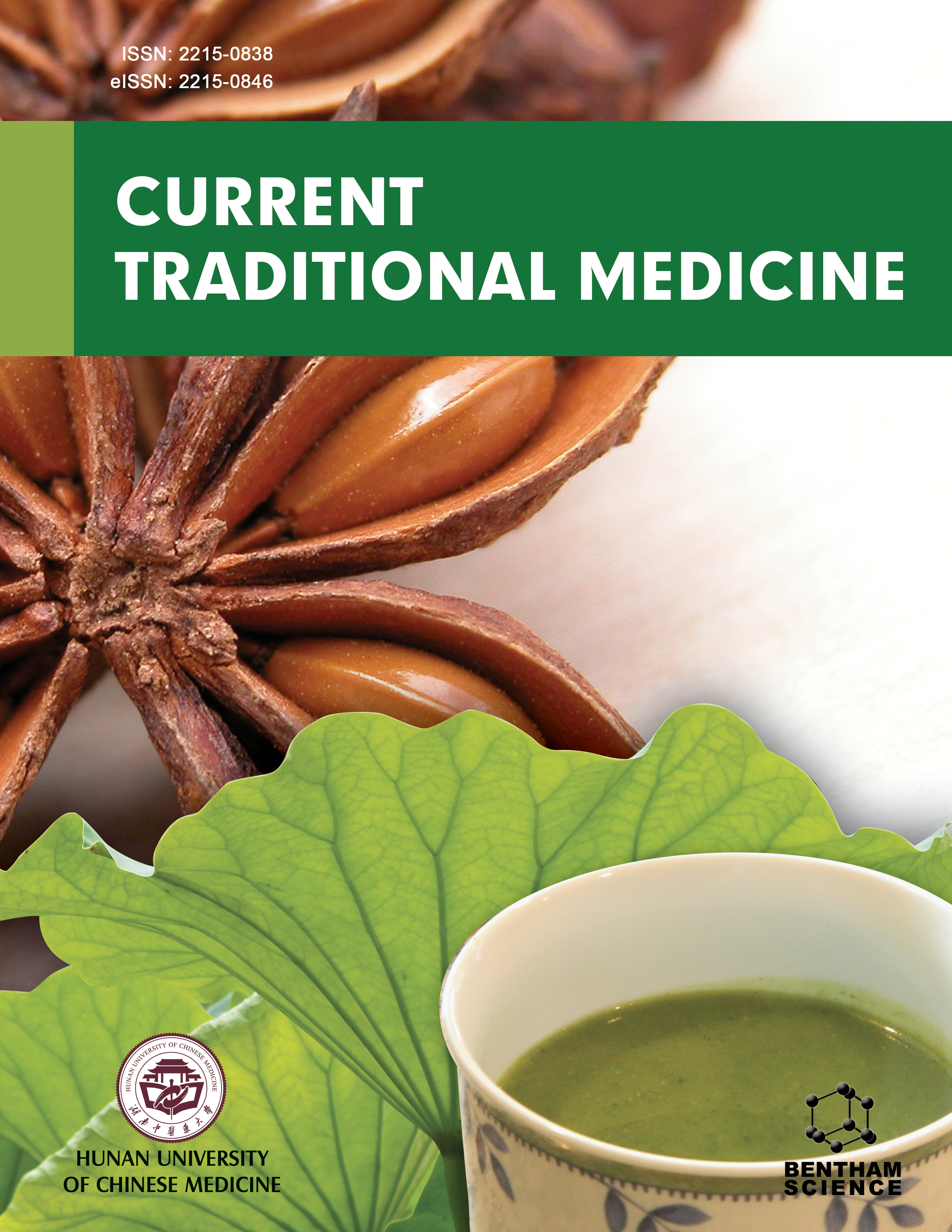- Home
- A-Z Publications
- Current Traditional Medicine
- Previous Issues
- Volume 8, Issue 1, 2022
Current Traditional Medicine - Volume 8, Issue 1, 2022
Volume 8, Issue 1, 2022
-
-
A Dig Deep to Scout the Pharmacological and Clinical Facet of Garlic (Allium sativum)
More LessGarlic, Allium sativum L., is a culinary herb that has been employed medicinally since ancient times. Garlic has been regarded as the oldest of all cultivated plants. Various experimental as well as human studies have demonstrated that garlic is used in preventing the initiation and evolution of several ailments such as hypertension, atherosclerosis, diabetes mellitus, cancer, microbial infections, arthritis, thrombosis, and Alzheim Read More
-
-
-
Neuroprotective Activities of Orientin: A Review
More LessOrientin is a flavonoid C-glycoside found in many plants, and studies investigating its neuropharmacological benefits have received significant attention in recent years. Orientin has modulating effects on various neuropathological pathways such as Nrf2-ARE, PI3K/Akt, JNKERK1/ 2, and TLR4/NF-kB. Orientin, therefore, is evaluated for its benefits in various neurodegenerative diseases such as Alzheimer's and Huntington's Read More
-
-
-
A Review of Himalayan Medicinal Plants against Cancer
More LessAuthors: Bhuwan C. Joshi, Piyush Verma, Vijay Juyal and Archana N. SahBackground: Plants contributed numerous novel compounds for prophylactic and curative medicine to modern science. They are an important source of natural agents used in various pharmaceutical industries. Himalayan plants are abundant in various secondary metabolites, such as anthraquinones, flavonoids, tannins, alkaloids, and terpenes. The Himalayan plants are grown in high altitudes and have around 6500 ye Read More
-
-
-
“Ayurvedic System”: A New Possible Safe and Effective way to get Rid of this Critical COVID-19 Pandemic Situation- A Review
More LessAuthors: Sumel Ashique and Navjot K. SandhuThe COVID-19 virus has become the most threatening infectious disease all over the world. From the beginning of the pandemic till today, a large number of researches have been conducted and are still going on to develop appropriate therapeutics that can prevent and cure this viral infection successfully. But unfortunately, modern western medicine could not find any effective drug that has no toxic effects on the host cell. TC Read More
-
-
-
Natural Products: Ray of Hope for Anxiety Disorders
More LessAuthors: Disha Arora and Rupesh K. GautamBackground: Anxiety, a familiar form of psychiatric disorder, influences numerous persons throughout the world. These psychological disorders frequently need an enduring regime of recommended medicines and impose huge costs on human societies. For the last few decenniums, discovery in the field of natural neurophysiology garnered a lot of recognition because of its least side effects. Objective: Many people fi Read More
-
-
-
Effects and Mechanisms of Medicinal Plants on Healing Scars: A Systematic Review
More LessAuthors: Catherine M. Sherwin and Saeid Heidari-SoureshjaniBackground: Scars can be a cosmetic disfigurement and can tremendously impact psychological, emotional, and social well-being. Some medicinal plants exert anti-scar properties via various mechanisms of action, many of which have not been clearly defined. Objective: This study will evaluate the effects of these medicinal plants with anti-scar properties and review the known underlying mechanisms related to the treatment an Read More
-
-
-
Antiviral Properties of Food Plants could help to Reduce Contagion and Severity in SARS-CoV-2 Infection
More LessIntroduction: It is important to find tools to help patients and prevent viral diffusion of pneumonia caused by the 2019 novel coronavirus (2019-nCoV or SARS-CoV-2). Recent articles have reported site-specific SARS-CoV-2 infection on a patient's body, specifically a very active replication in the throat and upper respiratory tract, even at the mild stage of the disease, which shows its efficient viral transmission in sputum. Materials Read More
-
Most Read This Month
Article
content/journals/ctm
Journal
10
5
false
en


